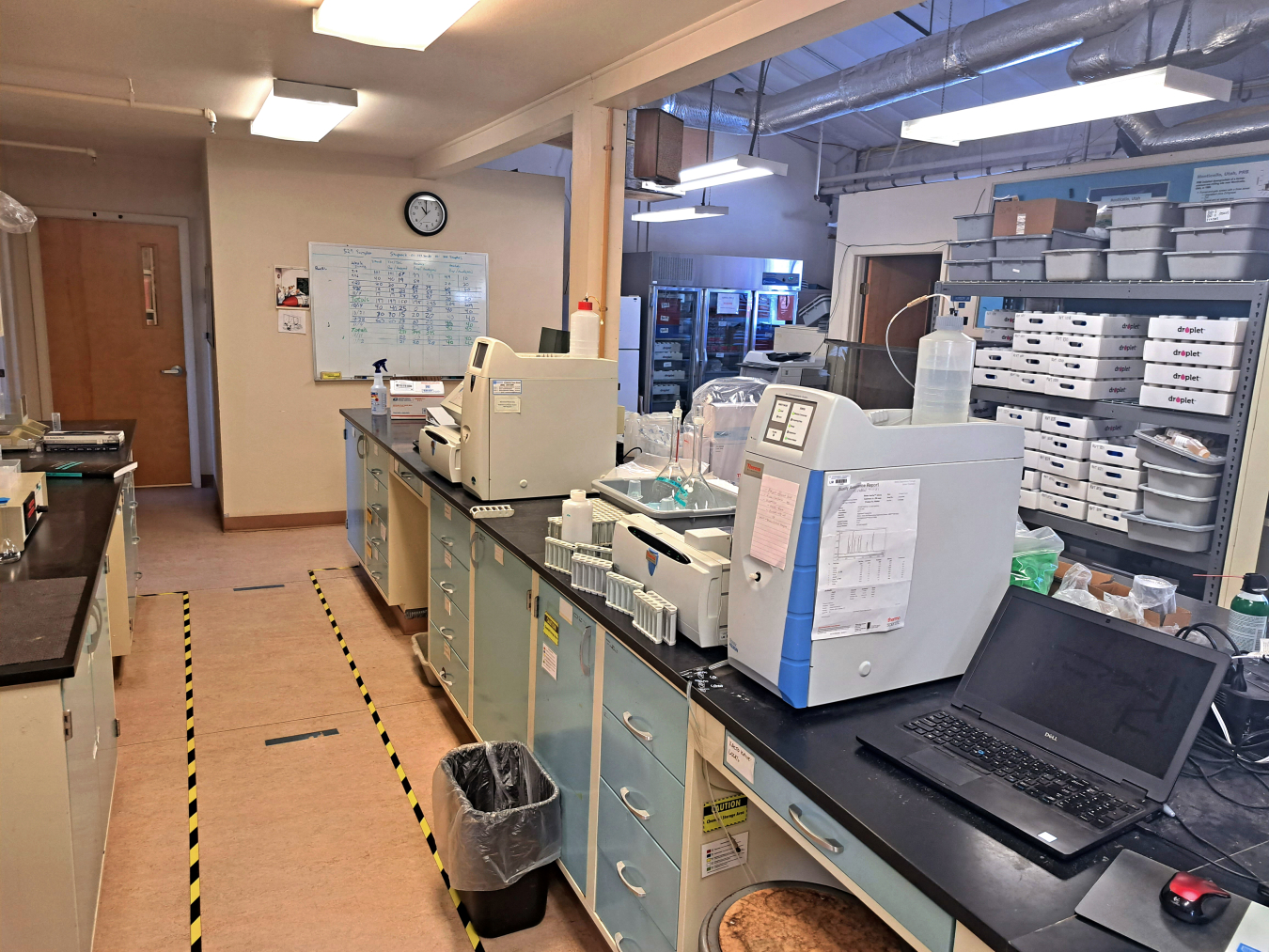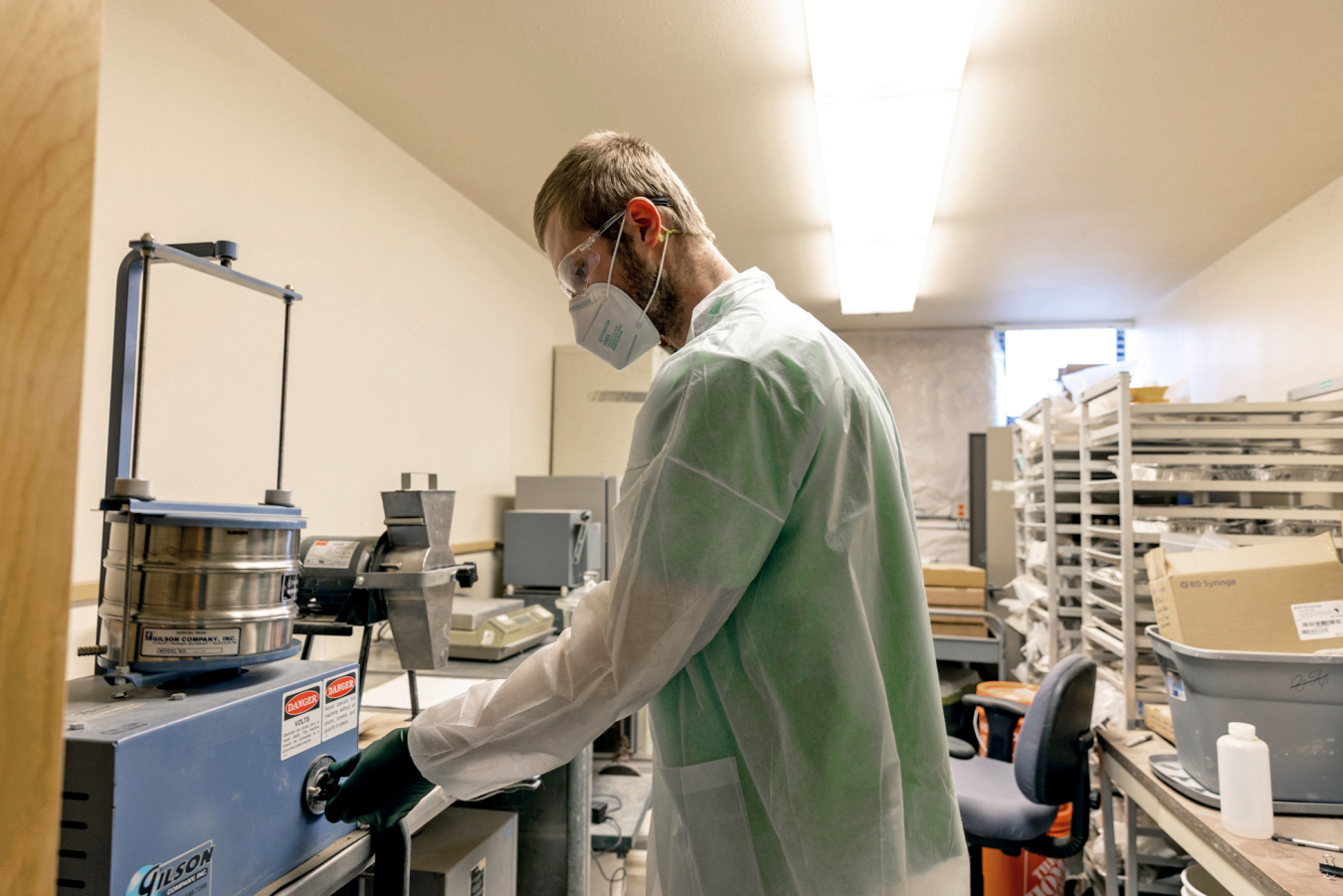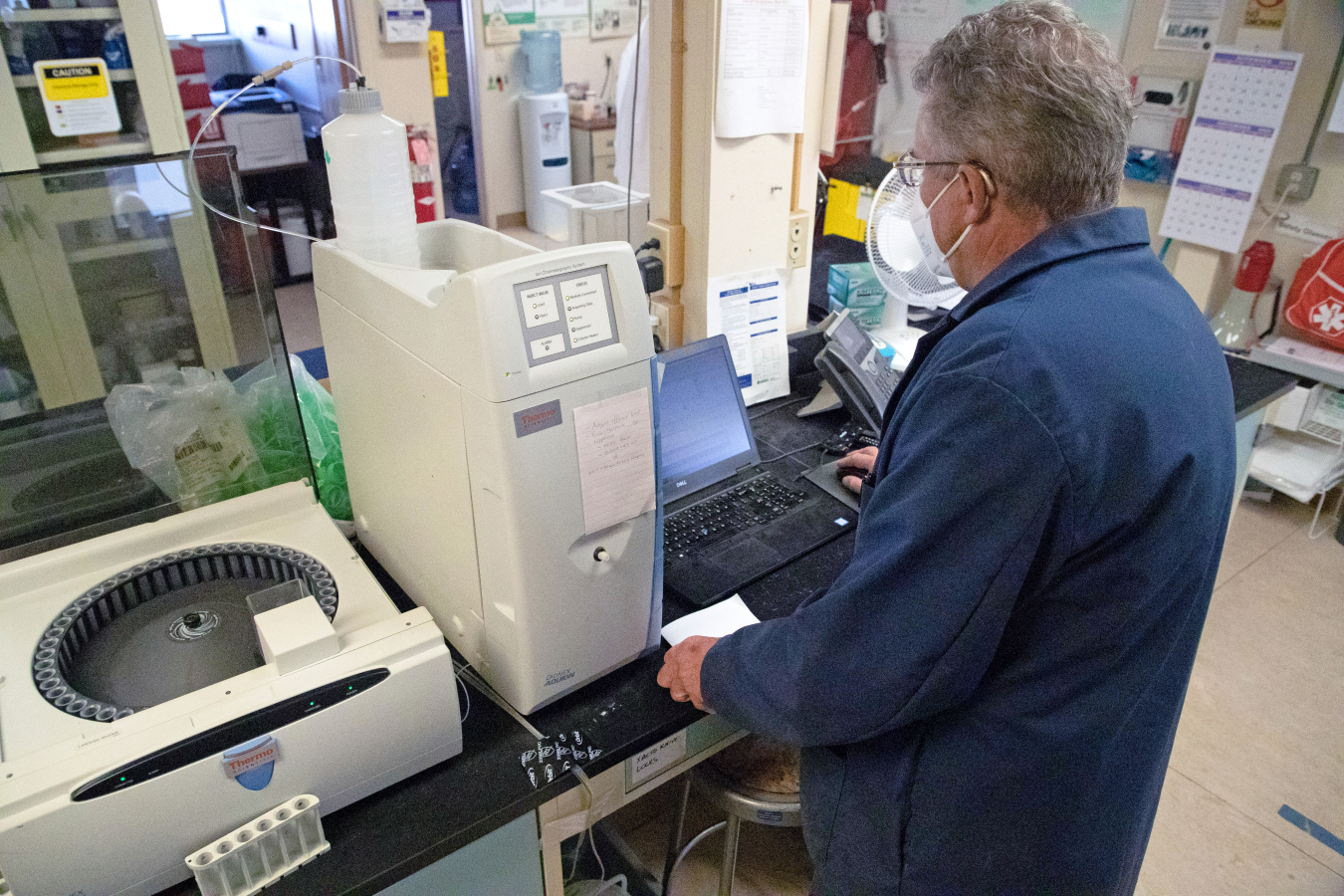The U.S. Department of Energy (DOE) created the Environmental Sciences Laboratory (ESL) in 1991.
Geochemists, ecologists, and other scientists use ESL to perform applied research, laboratory-scale demonstrations of soil and groundwater remediation and treatment technologies, and pilot-scale tests to supplement numerical modeling efforts.
Specialized analytical services performed in the laboratory continue to support research projects, site characterization, and routine environmental monitoring activities. Over the years, ESL has been equipped with more analytical instruments that have expanded its capabilities beyond chemical analysis.

Environmental Sciences Laboratory in Grand Junction, Colorado.
Environmental Sciences Laboratory Services
- Soil and aquifer physical properties analysis, including soil classification and saturated and unsaturated hydraulic properties.
- Plant ecophysiology (response of an organism’s physiology to environmental conditions).
- Groundwater contaminant transport modeling support.
- Batch and column tests.
- Contaminant speciation.
- Secondary source identification and release rates.
- Contaminant sequestration.
- On-site support via mobile laboratory.
- Petrographic analysis.
- Sample analysis support capabilities.

Solids from cores, sediments, and other areas are prepared for analysis in the ESL soils processing room.
Laboratory Analytical Instruments
- Ion chromatograph.
- High-performance liquid chromatograph.
- Inductively coupled plasma-mass spectrometer.
- Total inorganic and organic carbon analyzer.
- Kinetic phosphorescence analyzer.

The Dionex Aquion ion chromatograph (IC), when properly equipped, can analyze the following ions: fluoride, acetate, chloride, nitrite, bromide, nitrate, phosphate, sulfate, iodide, sodium, potassium, magnesium, and calcium.

